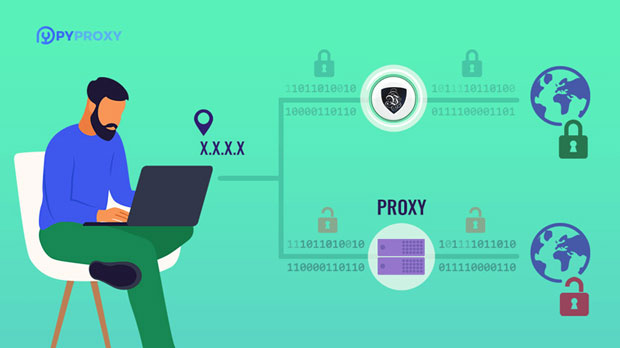When managing multiple accounts online, particularly in businesses like e-commerce, social media, and gaming, maintaining privacy, security, and efficiency is paramount. A common solution for these needs is the use of proxies, which allow users to mask their IP addresses and avoid detection or blocking. However, when it comes to using cheap proxies for multi-account management, the question arises: Is it a viable option? Cheap proxies often promise affordability but might fall short in terms of reliability, speed, and security. In this article, we will explore the pros and cons of using inexpensive proxies for multi-account management, considering factors such as risk, performance, and long-term benefits. Understanding these aspects will help users make an informed decision about whether cheap proxies are suitable for their needs.What Are Proxies and Why Are They Essential for Multi-Account Management?Proxies act as intermediaries between a user’s device and the internet, allowing users to mask their IP addresses. This is particularly useful for individuals or businesses managing multiple online accounts. For example, using proxies can help prevent account bans and CAPTCHA issues that might arise when too many accounts are accessed from a single IP address.When dealing with multiple accounts on platforms like social media, e-commerce websites, or gaming platforms, proxies ensure that users can access different accounts without triggering security mechanisms designed to prevent suspicious activity. By rotating IP addresses, proxies allow users to operate in a way that mimics natural behavior, reducing the risk of being flagged or banned by the platform.The Advantages of Cheap ProxiesOne of the main reasons users consider cheap proxies is their cost-effectiveness. For those managing multiple accounts and operating on a tight budget, cheap proxies present an affordable option for masking IP addresses. Below are some advantages of using cheap proxies:1. Cost-Effective Solution: Cheap proxies are ideal for individuals or businesses looking to save on operational costs. When managing large numbers of accounts, the cost of using proxies can add up quickly, and inexpensive options can help reduce this financial burden.2. Ease of Access: Cheap proxies are widely available, making them an easily accessible option for those looking for quick and simple solutions for online privacy and anonymity.3. Basic Protection: While they may not offer the highest security standards, cheap proxies can still provide a basic level of protection, such as hiding the user’s IP address and enabling basic anonymity.The Drawbacks of Cheap ProxiesWhile cheap proxies may seem appealing, there are significant risks and drawbacks associated with their use in multi-account management. These include:1. Lower Reliability: Cheap proxies are often less reliable than their more expensive counterparts. They may suffer from frequent downtimes, slow speeds, or inconsistent performance. This can result in a poor user experience, especially when managing multiple accounts simultaneously.2. Risk of IP Blacklisting: Inexpensive proxies often share IP addresses with a large number of users, which increases the likelihood of these IPs being blacklisted by the platforms being accessed. This can lead to account bans or suspensions, making cheap proxies a risky option for serious multi-account management.3. Limited Security: Cheap proxies tend to offer limited encryption and security features, leaving users vulnerable to data breaches or surveillance. In the context of multi-account management, where sensitive information is often at stake, using cheap proxies can expose users to significant risks.4. Lack of Customer Support: Budget-friendly proxy services often come with minimal customer support. This can be a major issue if problems arise, as users may struggle to get timely assistance to resolve issues related to connectivity, security, or performance.Performance Issues with Cheap ProxiesManaging multiple accounts requires not only anonymity but also stable and fast connections. Performance issues are a common problem with cheap proxies, and they can greatly impact the effectiveness of multi-account management. These issues include:1. Slow Connection Speeds: Cheap proxies are often overcrowded with users, which leads to slower connection speeds. This can make it difficult to perform tasks such as posting content, making transactions, or interacting with accounts in real-time.2. Frequent Disconnects: Cheap proxies are prone to frequent disconnections, which can cause interruptions in service. For individuals or businesses relying on smooth operations across multiple accounts, this can lead to a significant loss in productivity.3. Inconsistent IP Rotation: Effective multi-account management often requires rotating IP addresses to mimic natural behavior and avoid detection. Cheap proxies may offer inconsistent IP rotation, causing some accounts to be exposed or flagged by platforms.Security Concerns with Cheap ProxiesSecurity is a major concern when it comes to using proxies for multi-account management. Cheap proxies often lack the advanced security features offered by premium services, which can expose users to various risks. These risks include:1. Data Interception: Cheap proxies often lack robust encryption protocols, leaving users’ data vulnerable to interception by malicious actors. This is particularly concerning for businesses handling sensitive customer information or personal data.2. Exposure to Malware: Some low-cost proxy providers may expose users to malware or malicious software, either through compromised proxy servers or by selling users’ data to third parties. This puts the safety of accounts at serious risk.3. Unreliable Encryption: Without strong encryption, data sent through cheap proxies can be easily intercepted, potentially leading to account compromises. For multi-account management, this is a serious issue, especially when accessing platforms that require login credentials and personal information.Are Cheap Proxies Worth It for Multi-Account Management?The decision to use cheap proxies for multi-account management depends on the specific needs and budget of the user. While they may offer an affordable and convenient solution, the potential drawbacks—such as poor performance, security risks, and reliability issues—can outweigh the benefits in certain scenarios. For casual users or individuals managing a small number of accounts, cheap proxies may suffice. However, for businesses or individuals who rely heavily on their accounts for professional purposes, investing in premium proxies may be a more worthwhile choice.Cheap proxies offer an inexpensive solution for multi-account management, but they come with several trade-offs in terms of performance, reliability, and security. For users managing multiple accounts in a high-stakes environment, the risks associated with cheap proxies may be too great. While they may be suitable for less critical uses, those seeking a stable, secure, and efficient solution should consider premium proxy services that provide better support, security, and performance.In conclusion, while cheap proxies can be an affordable option for multi-account management, users should carefully assess their needs and consider the potential risks before making a decision.
May 16, 2025



































































